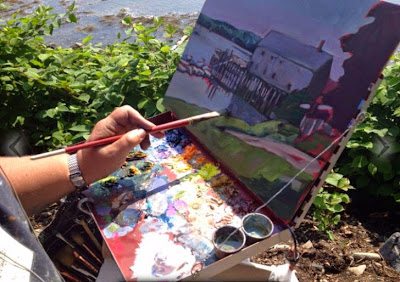By now, I assume you’ve seen the video, above, of the art student who lost her temper at her classmate’s inane and snarky critique. Although she has been characterized as unstable and over-the-top, I feel her pain. Nasty criticism is everywhere, and, sadly, young artists often lead the pack.
I remember the first time my work was reviewed for publication. The writer—a successful, middle-aged gallery director—was snarky and destructive. I felt it keenly.
This past Sunday, Pastor James Laughlin talked about the characteristics of St. Paul that made him such a formidable evangelist. It occurred to me that they were applicable to teaching and criticism as well.
 |
|
St. Paul, Georges de la Tour, 1615
|
Paul comes down to us as one of the most influential people of antiquity, and certainly the most important figure of the Apostolic Age. That’s pretty amazing considering that after he gave up his Pharisaical career, he spent the rest of his life as a peripatetic tent-maker, preacher, prisoner, and letter writer.
 |
|
St. Paul in Prison, Rembrandt van Rijn, 1627
|
Philippians 4:10-20 reveals a writer who was affirming, content, flexible and confident. He exhorts his friends in Philippi, he talks freely of his own challenges, but he’s always optimistic.
His success as an evangelist ought to encourage us to imitate him as critics and teachers. And yet so often teaching and criticism takes exactly the opposite approach—it demeans.
People are capable of wonderful things, but our society routinely discourages people from daring to be great. When someone disregards all the voices telling them they can’t do something, and they challenge themselves with hard work and dedication, they ought to be encouraged.
Let me know if you’re interested in painting with me on the Schoodic Peninsula in beautiful Acadia National Park in August 2015. Click here for more information on my Maine workshops! Download a brochure here.






























